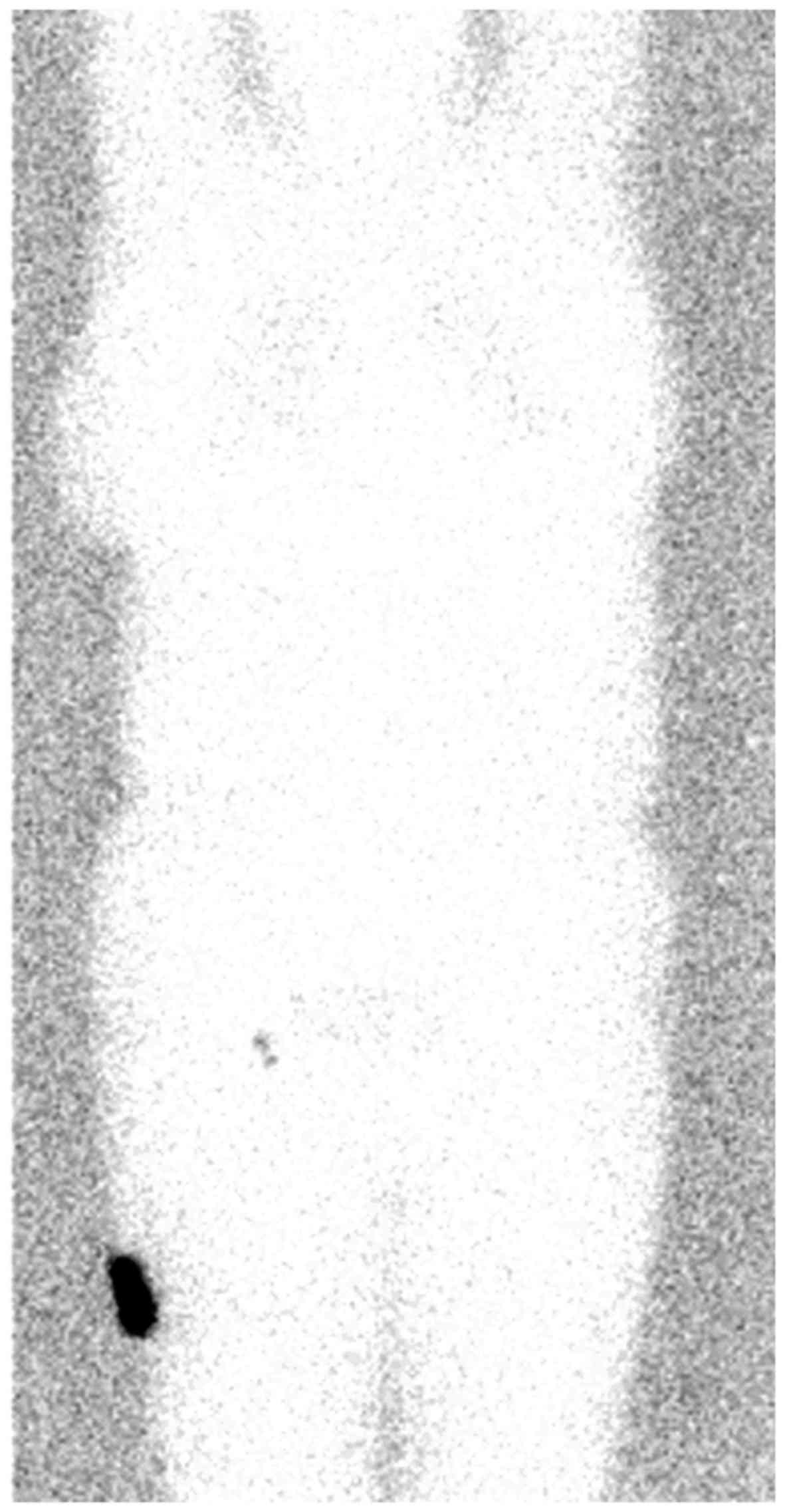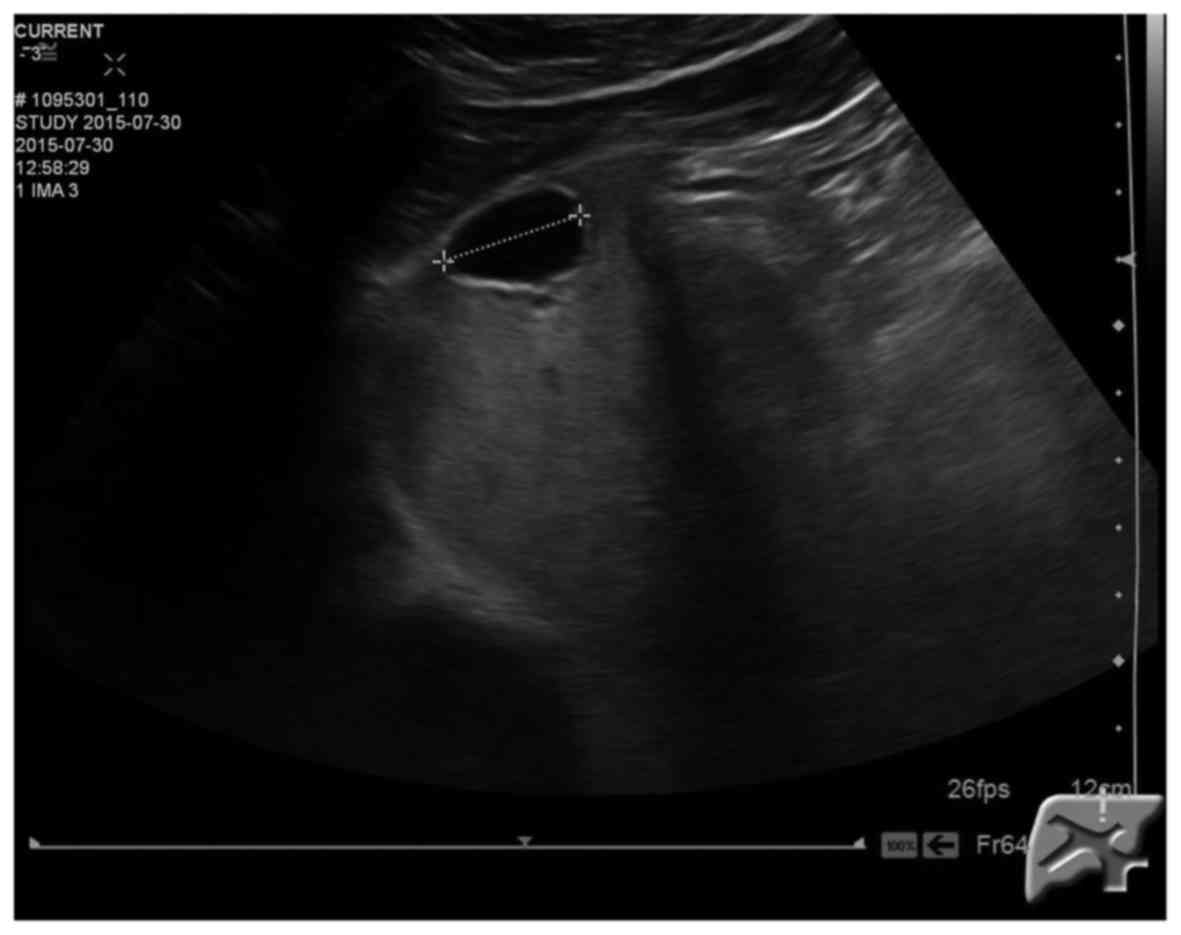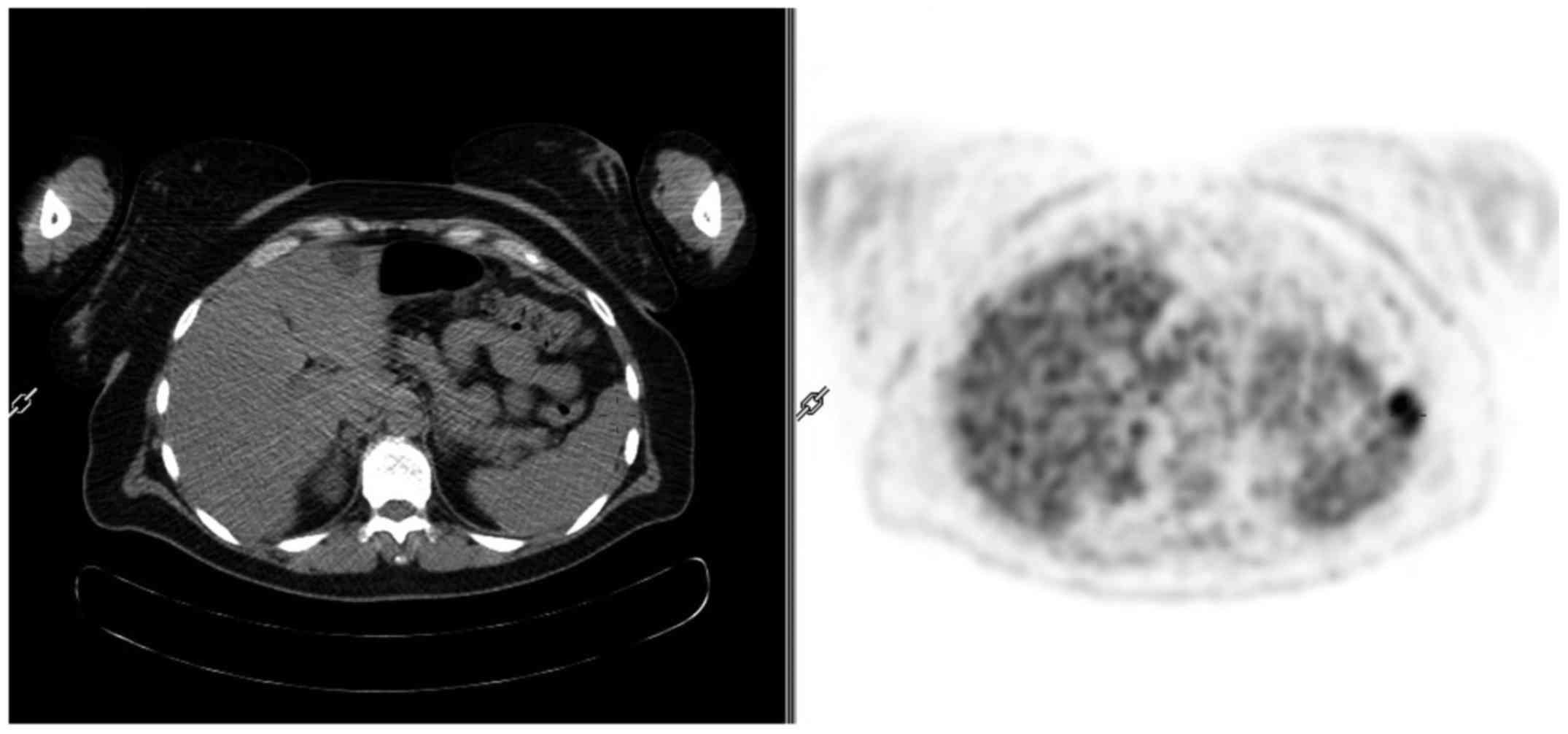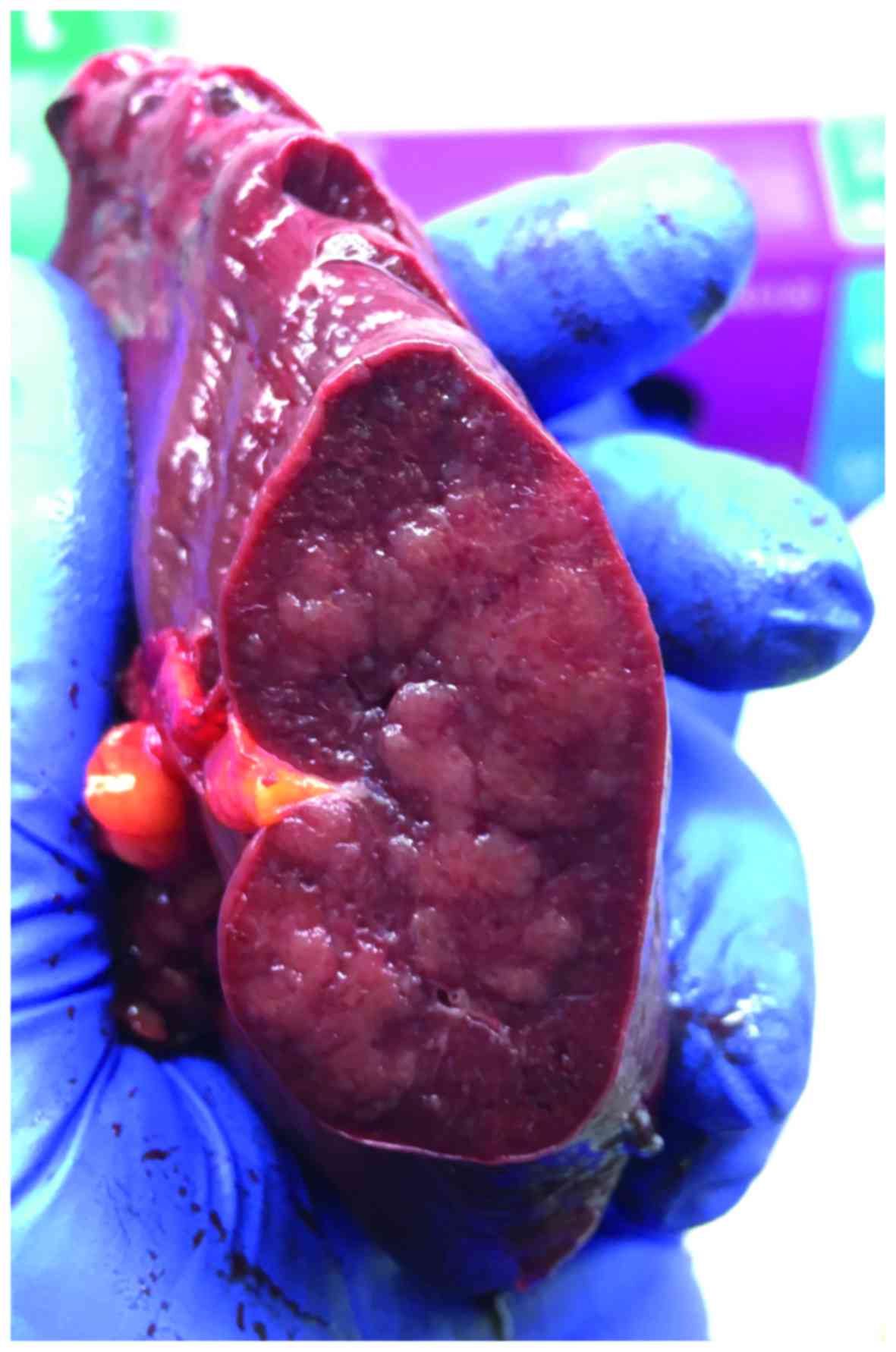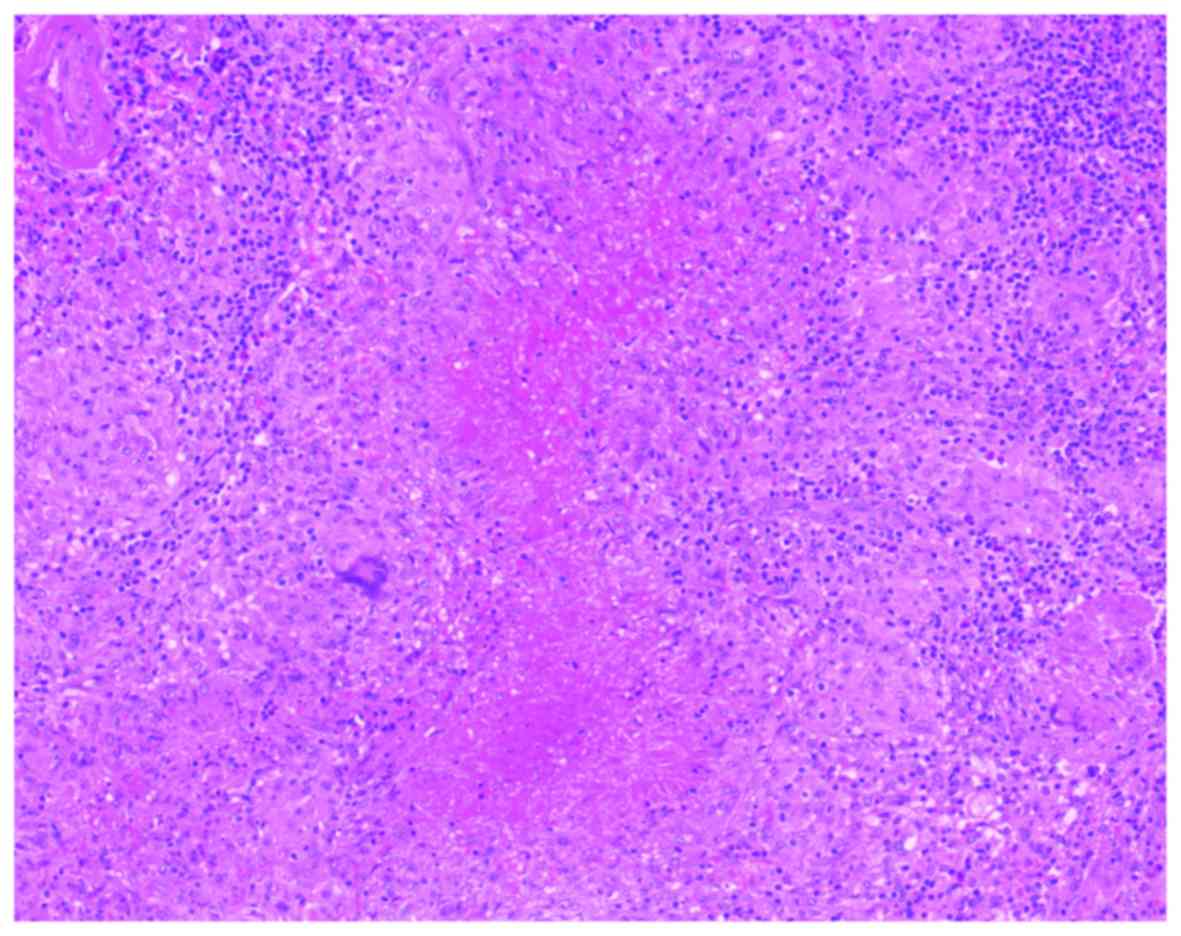Atypical spleen tuberculosis in a melanoma patient accidentally detected during a 18F‑FDG PET/CT study: Case report
- Authors:
- Published online on: November 13, 2017 https://doi.org/10.3892/mco.2017.1498
- Pages: 89-92
Metrics: Total
Views: 0 (Spandidos Publications: | PMC Statistics: )
Total PDF Downloads: 0 (Spandidos Publications: | PMC Statistics: )
Abstract
The present study, discussed a rare case of a 50‑year‑old woman who was treated for malignant melanoma and underwent 18F‑fluorodeoxyglucose (FDG) positron emission tomography (PET)/computed tomography (CT) examination for evaluation of disease. 18F‑FDG‑PET/CT examination was performed from the top of the head down to the knee using a Gemini TF PET/CT scanner 60 min following intravenous injection of radiotracer with mean activity of 364±75 MBq. Previous performed laboratory test and clinical examination was irrelevant. By abdominal ultrasound no abnormalities in abdominal organs beside the liver cyst were found. The 18F‑FDG PET/CT exam showed an increased glucose metabolism in the anterior pole of the spleen, which was considered as melanoma metastasis. Splenectomy was performed and histopathology examination tuberculous lesion in the spleen was revealed. Histopathology examination showed epithelioid granuloma and in correlation with the patient's history allowed to establish tuberculous‑like lesions in the spleen. In the present study, authors used 18F‑FDG PET/CT examination to detect the melanoma metastasis of a 50‑year‑old woman, and found that abnormal focal accumulation of radiotracer with limited cancer specificity in PET/CT examination in cancer patients should not be unambiguously taken as a metastatic lesion.



